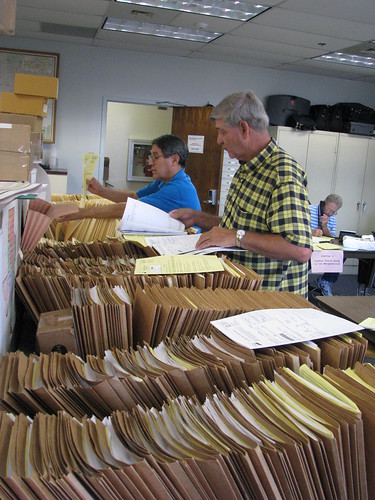This post is part of the Science Tuesday feature series on the USDA blog. Check back each week as we showcase stories and news from the USDA’s rich science and research portfolio.
Earlier this month, representatives of USDA’s National Agricultural Statistics Service (NASS) spent two weeks contacting farmers and ranchers around the nation to find out how much U.S. farmland is planted to specific crops and to determine the number of livestock on U.S. farms and ranches in 2011. In all, more than 35,000 interviews were conducted, with Texas accounting for about 5,000 of them.
Obtaining actual planting information and figuring out just how much cropland and pastureland is used by U.S. farmers is a massive task that NASS undertakes every year. The process not only involves a lot of modern technology, but also requires a lot of synergy between NASS Field Offices, field data collectors, and the producers themselves.
To ensure that all farm and ranch land is accounted for, NASS uses satellite imaging and aerial photography to divide the United States into more than 10,000 sampled land parcels, called segments. Every state in the nation has sampled segments representing their agriculture, with the Lone Star state accounting for over 1,100 of them.

Once the segments are set, the field observations and personal interviewing begins. This process and the relationship between NASS, the field interviewers and our farmers and ranchers are vital to providing reliable statistics. Most of the interviewing is handled by trained employees of the National Association of State Departments of Agriculture (NASDA). Their interaction with farmers and ranchers allows NASS’s statisticians to focus on processing the information as it comes in.
In addition to these steps, sometimes the weather can be an obstacle for determining acreage numbers. In 2011, while some states have been battling major floods, Texas and some of our neighbors have been dealing with unprecedented drought and major wildfires.
But once again we have been able to pull the resources together and successfully complete our tasks. The results of this major undertaking will become available in two days, when NASS releases the annual June Acreage report, on June 30. The report is highly anticipated by everyone involved in agriculture since it provides an important update to NASS’s Prospective Plantings report, released in March.
